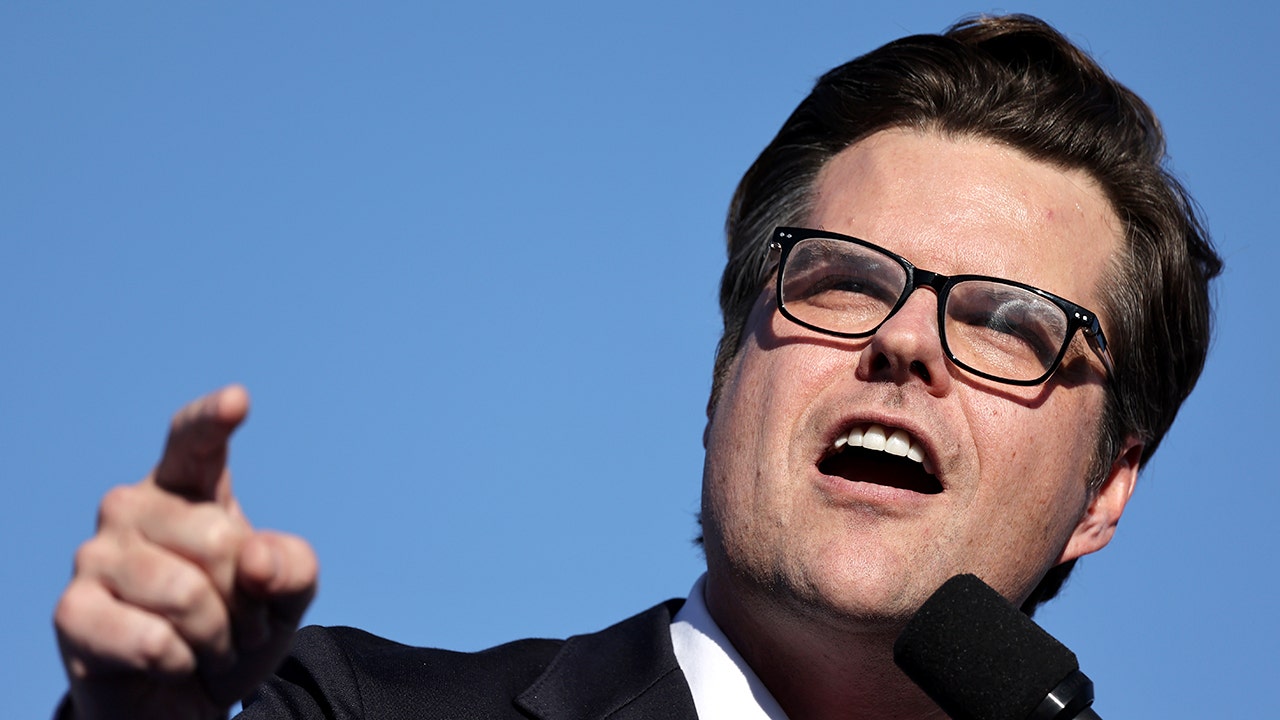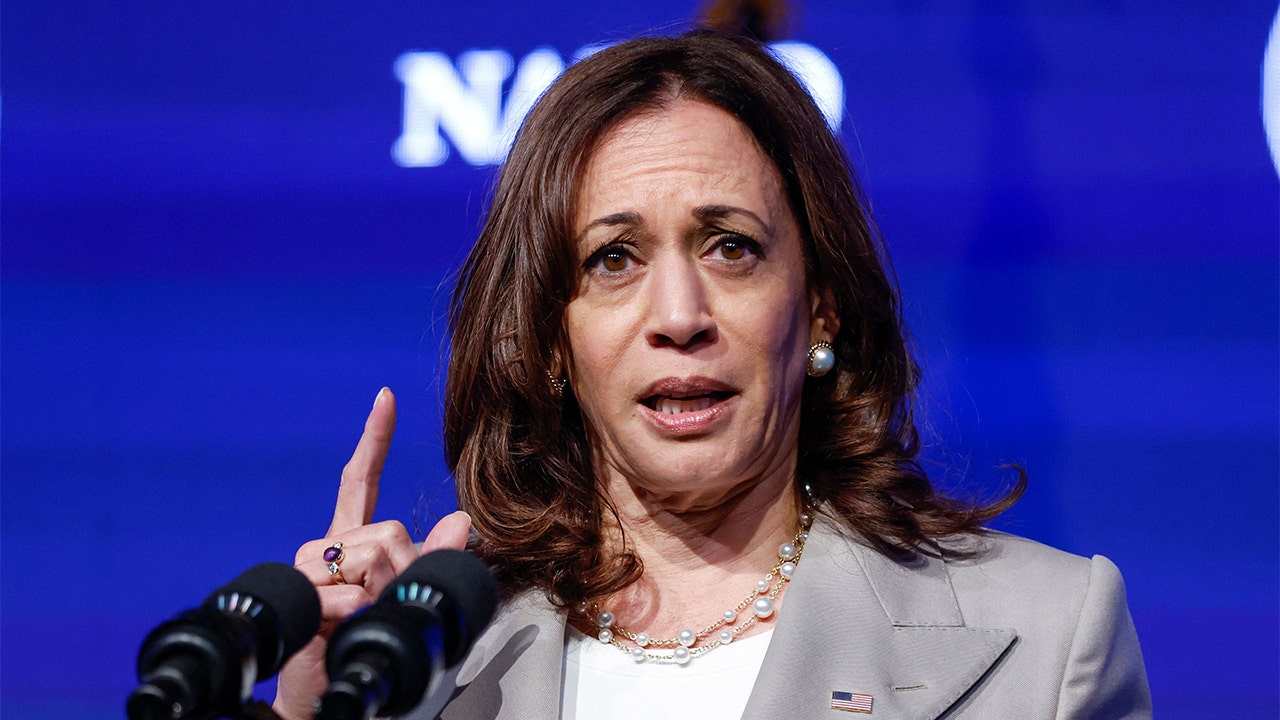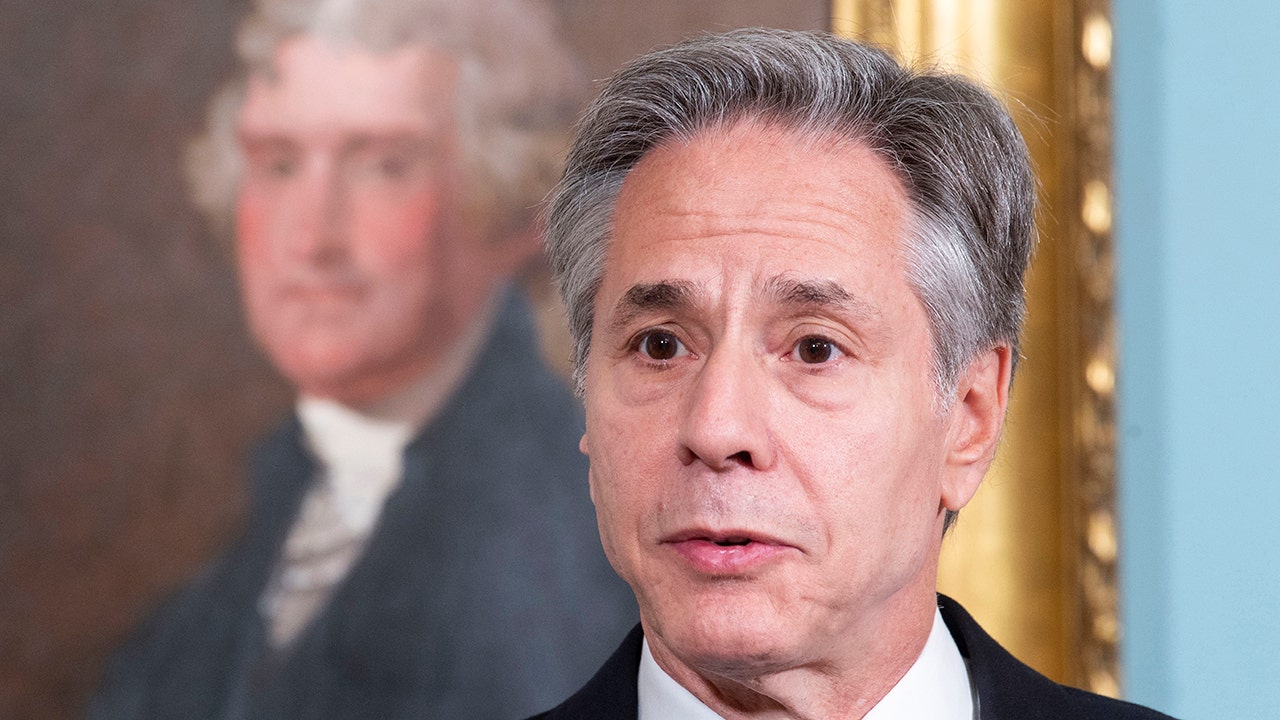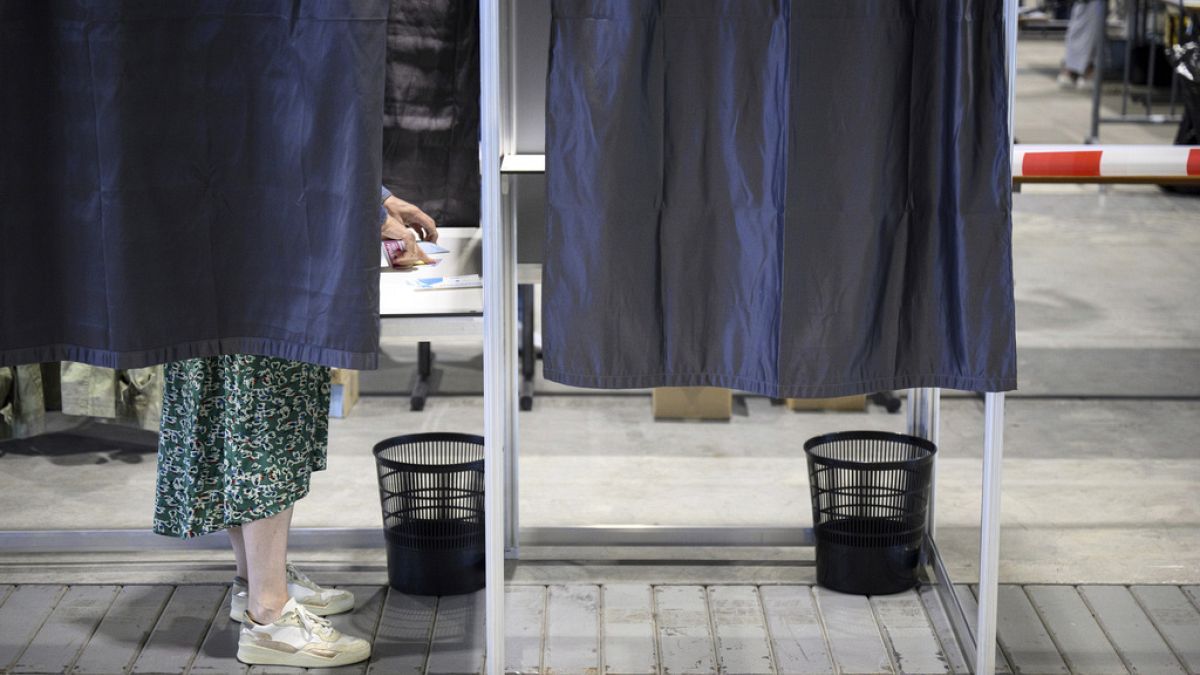San Francisco, CA
Where did it go wrong? Here's how San Francisco Unified's issues led to school closures

SAN FRANCISCO (KGO) — The San Francisco Unified School District announced Tuesday which schools will have to close due to budget concerns. Now, many are asking at what point did things begin to unravel for a district that was once financially stable.
To understand the chaos throughout San Francisco’s School District, let’s start with the central office, the people who run the day-to-day business operation. At a recent Board of Supervisors meeting information was given on how things are not functioning efficiently.
SFUSD releases list of schools that will potentially close
“All of those systems, they are right now unfortunately run by one or two senior people. They don’t have enough staff there,” said Maria Su, who is on the School Stabilization Team. Su was recently appointed by Mayor London Breed to lead a city team that would help stabilize things at the district.
What we do know is that during the pandemic, some senior staff left or retired.
Susan Saunders, a principal who retired in June 202, told us some of the district’s problems stem from what many refer to as a disconnect between the schools and the central office.
“I think it’s just trust and I think it’s still there, that lack of trust is still there. I think what people at the school sites are asking for is, make us part of the conversation too. Let’s be solution-oriented and work together,” said Saunders.
An example is the lack of information when the district chose to delay the announcement of school closures.
“I think we need to do a better job of explaining our budget crisis and then why school closures fit into our picture of addressing the budget crisis,” said SFUSD Superintendent Dr. Matt Wayne.
This budget crisis is due, in part, by some families deciding to leave San Francisco Public Schools through the years, meaning schools continue to miss out on millions of dollars from the state.
“We wouldn’t be in this financial crisis if we hadn’t lost so many students. Now, I think a lot of that has to do, as a parent who went through this process, with how long it took to reopen schools after COVID,” said San Francisco Supervisor Hillary Ronen during a recent meeting.
Current Superintendent Matt Wayne was not there at the time, Vincent Matthews was.
Instead of getting schools to reopen safely, some on the school board were focused on other matters they considered important like trying unsuccessfully to rename schools and tearing down historic murals that some deemed insensitive.
Former school board commissioner Gabriela Lopez was one of the school board members eventfully recalled.
SF mayor’s office steps in to help as school district faces $400M budget deficit, closures
“If I could have done anything to make that faster to improve the timeline so that we could ensure schools are safe, I would have but because it was the pandemic and there’s such a bureaucratic process, it’s difficult to make those moves and then we balanced that with the other discussions that were top of mind for a lot of people,” said Lopez.
That delay also hurt the recruitment of teachers, adding to the shortage that already existed.
A San Francisco civil grand jury found that according to 2020-2021 data, “SFUSD does not employ an adequate number of credentialed teachers to afford a quality education to all San Francisco students.” Only 77 percent were credentialed.
Karen Kennard was the foreperson of that grand jury.
“We compared it with all of the Bay Area school districts and the Bay Area district generally have about 82 percent, clean credentialed teachers so San Francisco was lagging behind all of the other school district in the Bay Area except for Alameda,” said Kennard.
Another major revelation, SFUSD administrators were initially tight lipped.
“Their administrators dodged us, refused to return phone calls, refused to return emails and we finally had to go to get the city attorney involved,” said Kennard.
Then came a flawed payroll system that cost the district $35 million and another $20 million to implement a new one which should be up and running by July 2025.
And now the latest example of a mismanaged system is an additional $30 million that was needed to hire more special education teachers for this year. $30 million that was not initially in the budget.
A crisis, that even the district admits, was created by the central office.
“Principals were trying to hire these positions and the budget money was not there,” said School Board President Matt Alexander.
As a result, when schools started last August, the district could not hire the extra special education teachers needed because the funds were not in the budget.
“We failed our students at the beginning of the year,” said Superintendent Wayne to member of the Board of Supervisors.
SFUSD facing 120 teacher vacancies amid looming school closures
The district has since found the money to hire some special education teachers using one time funds, but there are still vacant positions.
Supervisor Ahsha Safai has asked the city controller to investigate the matter.
“We need to know who made that decision and who broke the law on behalf of the school district because there needs to be accountability,” said Safai.
Now, also unsettling is the city’s proposal to use $8.4 million left over from the Student Success Fund, to begin stabilizing the district.
That did not sit well with some members of the Board of Supervisors.
“That money is supposed to be used to get students achieving academically and healthy in their minds, body and spirit and the precedent that that is setting, is scaring the life out of me,” said Supervisor Ronen.
But Su suggested that that money would go toward hiring much-needed paraprofessionals and helping families whose schools will be closing.
“Could we use some of these dollars to support schools and young people, children and families who are going to transition from a closed school to a welcoming school. I feel all of these things fall within the scope of the student success fund,” said Su.
The question now is how can families ever trust the district to finally get things right?
“We’re working incredibly hard to rebuild the trust with our community. So I think we’re doing what we can to lay out, here is the situation we’re facing and let’s work through it together,” said Dr. Wayne.
“And more importantly how do we never get to this place ever again,” said Su.
Copyright © 2024 KGO-TV. All Rights Reserved.

San Francisco, CA
3 quick takeaways from the 49ers 38-10 loss to the Packers: Time to wrap up the season?

The writing seemed to be on the wall heading into the weekend for the San Francisco 49ers when Brock Purdy, Nick Bosa, and Charvarius Ward were ruled out due to injury. Then, Trent Williams was deemed inactive after a pregame warmup.
Well, Sunday went exactly how many expected and even worse to a degree, as the 49ers suffered their ugliest loss of the season in a 38-10 defeat to the Green Bay Packers, dropping to 5-6 on the season.
Offensively, the 49ers couldn’t establish any form of a run game, while their passing game struggled to generate many explosives and finish drives.
Defensively, San Francisco was out-physicaled and looked gassed from the jump, struggling to contain the run without Bosa, leading to the blowout defeat.
Here are three quick takeaways from the 49ers 38-10 loss to the Packers on Sunday.
Establishing the run game
Coming into the game, with a key injury at quarterback and at left tackle, it was clear the 49ers weren’t going to muster enough offense without a consistent run game.
San Francisco had struggled to establish the run with Christian McCaffrey over the last two games, as the star rushed for just 3.7 yards per carry since returning from injury.
That didn’t improve on Sunday, as McCaffrey had just 31 yards on 11 carries, failing to muster any type of success on the day. In our three keys to win, I highlighted the need to give Jordan Mason more carries during a game where the 49ers absolutely needed an identity on the ground.
Mason got a 16-yard carry on his first touch on the first drive of the second half, but didn’t see much volume outside of that, with San Francisco relying more on their passing game after falling into a deficit early.
The 49ers just looked flat, so an extra boost of physicality from Mason could’ve helped. Instead, they rode McCaffrey hard again, who struggled on the ground, while fumbling the ball on his longest catch of the day.
Defensively, San Francisco allowed Green Bay to run the ball 42 times, gaining 169 yards and three touchdowns on the ground. Starter Josh Jacobs led the way with 106 yards and all three scores, powering through inside the red zone for a number of touchdowns.
The passing game was inconsistent for Green Bay, as Jordan Love completed just 13/23 passes for 163 yards. But, a strong rushing attack led the way en route to 38 points.
Big swing
One of the 49ers’ biggest chances in this game came to open up the second half. San Francisco had an abominable start, going three-and-out on consecutive possessions, while giving up scores on all three of Green Bay’s opening drives.
Down 17-7, the 49ers had a big chance to cut the game to a one-score lead, but opportunities were missed, as has been the case for much of the year.
Facing a 1st & 10 at the Green Bay 47-yard line, Brandon Allen had a deep ball to Jauan Jennings behind him, missing the open wideout who could’ve corraled the pass but wasn’t able to. Then, on 4th & 2, Allen had happy feet and was late dishing out an out-route, killing the drive.
After having a chance to pull within one score, the 49ers missed out, giving Green Bay a chance to improve their lead. But, the defense forced a quick three-and-out, giving San Francisco a chance to get within one score once again.
Well, as they did on the opening drive, San Francisco moved the ball, getting from their 10-yard line to the Green Bay 45-yard line. But, disaster struck again, as Brandon Allen had a pass intercepted off a dart to Deebo Samuel, which went through his hands and into those of Xavier McKinney.
Green Bay wouldn’t let that opportunity pass, as they swiftly put together a three-play, 26-yard touchdown drive to go up 24-7, never looking back from there.
In a game where so much was already going against them, the 49ers had a big chance to begin the second half. But, as they’ve done for much of the season, San Francisco was unable to capitalize.
Outlook of the stars
Coming into the season, it seemed like the 49ers were going to rely on their stars more than expected with the roster getting older and younger talent slowly getting integrated into the roster.
Well, 11 games through, San Francisco is 5-6 and their stars are a big reason for that.
Offensively, it starts at the top with Brock Purdy. The quarterback has been a positive for the season as he has utilized his legs more often, while overcoming other deficiencies. But, the question is: has he looked like a $60 million dollar quarterback?
Running back Christian McCaffrey missed the entire first half of the year as he rehabbed Achilles tendonitis, leaving San Francisco in a hole with arguably their best skill position player shelved. Brandon Aiyuk suffered a torn ACL early in the season, forcing rookies into action sooner rather than later at the receiver position. Then, Trent Williams started dealing with ankle issues, limiting his play and forcing him to miss a game.
Defensively, Nick Bosa has recently dealt with an oblique and hip issue, missing this past week. Javon Hargrave was ruled out early in the season with a triceps injury. Charvarius Ward has missed time. Fred Warner has not looked the same as his Defensive Player of the Year-level start. Talanoa Hufanga has also been out of the lineup for much of the year.
That has led to a talent depreciation on both sides of the ball, with certain players feeling like they’ve regressed, while the passion and fight in this team feel different than years past.
With the top players looking as they have over the first 11 games of the year, it’s questionable to see how this team can truly turn things around.
San Francisco, CA
San Francisco Giants Trade Idea Swaps Slugger For High-Risk, High-Reward Ace

The San Francisco Giants need more pitching and seem to want to trade one of their sluggers — and they may be able to accomplish two tasks with one move.
With Buster Posey seemingly wanting to move on from LaMonte Wade Jr. while he still holds a bit of trade value, he will need to consider what they to get back in return.
One team that could be desperate to bring Wade in is the Houston Astros, long plagued by poor play at the plate from their first basemen. While most of their pitchers were injured last season, they do have a slight surplus of starting caliber players on their roster. They might just be the perfect trade partner.
A potential deal between the two squads could see the Giants ship Wade off to the Astros in exchange for right-handed starter J.P. France and pitching prospect Jackson Nezuh.
France is an interesting case, and would certainly be a risk, but does have the potential to be an impactful arm in the backend for the rotation.
He is a long way from someone that could replace Blake Snell, but could be an interesting innings eating starter or long-reliever depending on how he comes back from injury.
That is something that San Francisco wished they had last year during their flurry of pitching injuries.
The Houston righty struggled last year, but it was just a small sample size of five starts. The Giants would need him to find a way back to his surprisingly solid rookie campaign.
In 2023, he made 24 appearances (23 starts) and finished with a 3.83 ERA across 136.1 innings pitched.
France has a great breaking balls that helped him soar in the minor leagues. HIs changeup is especially effective.
Given that he is coming off of a shoulder injury, though, the Astros could need to add a mid-tier prospect as a bit of insurance.
Nezuh was a 14th-round selection in the 2023 MLB draft out of the Louisiana-Lafayette Ragin’ Cajuns.
He has always been more of potential guy than actual results, but he had a great first year in the Houston farm system. He had a 3.89 ERA with 11.3 K/9 across Single and High-A.
Wade was red-hot to start last season, but fell off hard. As he enters the final year of his career, Posey could be looking to maximize his trade value and help the roster out in a bigger spot of need.
San Francisco, CA
Hayes Valley Quadruple Murder Suspect Convicted on All Counts

Lee Farley, 36, was convicted Friday of shooting and killing four men in the Hayes Valley neighborhood in 2015.
In a statement, prosecutors said that Farley was found guilty of using a rental car from Walnut Creek to perform a drive-by shooting on an idle Honda Civic, firing 18 shots into the vehicle before fleeing.
All four victims died on the scene.
Farley, who initially plead not guilty, was serving time for unrelated charges in 2016 when authorities connected him to the shootings, according to reporting from SFGATE.
“Our strong legal team fought hard, understanding that while nothing we do can bring back their loved ones, that hopefully this verdict brings them some comfort,” said District Attroney Brooke Jenkins in the statement.
Farley is set to be sentenced on Dec. 16.
Photo via X
-

 Business1 week ago
Business1 week agoColumn: Molly White's message for journalists going freelance — be ready for the pitfalls
-

 Science5 days ago
Science5 days agoTrump nominates Dr. Oz to head Medicare and Medicaid and help take on 'illness industrial complex'
-

 Politics1 week ago
Politics1 week agoTrump taps FCC member Brendan Carr to lead agency: 'Warrior for Free Speech'
-
/cdn.vox-cdn.com/uploads/chorus_asset/file/25739950/247386_Elon_Musk_Open_AI_CVirginia.jpg)
/cdn.vox-cdn.com/uploads/chorus_asset/file/25739950/247386_Elon_Musk_Open_AI_CVirginia.jpg) Technology7 days ago
Technology7 days agoInside Elon Musk’s messy breakup with OpenAI
-

 Lifestyle1 week ago
Lifestyle1 week agoSome in the U.S. farm industry are alarmed by Trump's embrace of RFK Jr. and tariffs
-

 World1 week ago
World1 week agoProtesters in Slovakia rally against Robert Fico’s populist government
-

 News7 days ago
News7 days agoThey disagree about a lot, but these singers figure out how to stay in harmony
-

 News1 week ago
News1 week agoGaetz-gate: Navigating the President-elect's most baffling Cabinet pick














